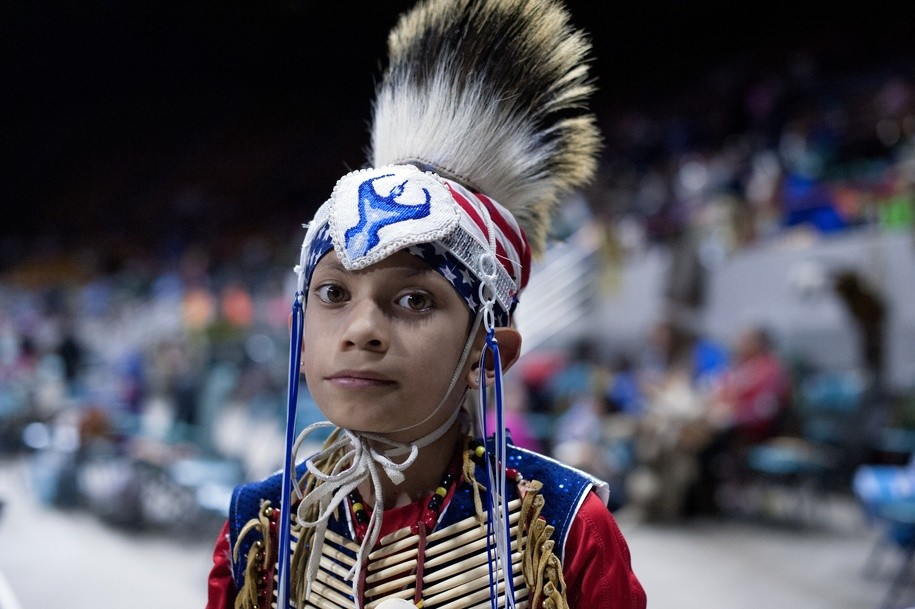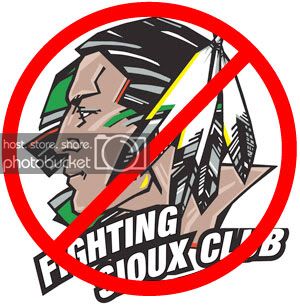 David Cyrus, 8, of the Crow Nation poses for a portrait prior to the Grand Entry during the Denver March Powwow on March 24, 2017, in Denver, Colorado.
David Cyrus, 8, of the Crow Nation poses for a portrait prior to the Grand Entry during the Denver March Powwow on March 24, 2017, in Denver, Colorado.
Conditioning parole and probation on the ability to pay fines and fees is bad policy, period. Just as cash bail and disproportionate fees and fines discriminate against those least able to pay, so too do these fees imposed on people on supervised release. In Montana, both fees and conditions of release, which come with their own cost, have an outsized impact on Native Americans.
Both poverty and geography are penalized under the current system. Disadvantaged people of every background are routinely released on supervision with little chance of satisfying its requirements. “Without treatment, housing, transportation and other basic services,” the ACLU’s Sarah Mehta and Robin Gomila note, “people under supervision are unable to meet the conditions and responsibilities—as well as costs—imposed by supervision.” Native Americans, especially those who live on reservations, are more likely to live in poverty and less likely to have access to the services they need to satisfy supervision requirements. When they fail, they’re re-incarcerated.
Requirements weren’t always this severe. The number of people under supervision has quadrupled since 1980. Over the same period, punitive restrictions increased in popularity, including those that imposed costs on those on probation or parole. Other deleterious changes were driven by cost. Example: The state used to pay for GPS monitoring, drug tests, and treatment. Now, individuals do.
Changing norms and increasing caseloads (without commensurate increases in resources) changed the role of supervision officers. If they ever were able to focus on rehabilitation, that’s not the case now. Rather, they’re incentivized to issue formal violations. Sometimes, that’s the only option. Too often, though, officers perceive the most extreme option as the surest way to protect themselves from perceived failure or liability.
Melissa Smylie managed to get herself released from prison by becoming her own lawyer. But once under supervision, she was subject to stifling—and unreasonable—requirements. Melissa had to quit the job she’d pre-arranged because her probation officer wouldn’t let her drive; she had to turn down the next job she found because it was casino-related, though in a totally separate location. When she fought back against “baseless” probation violation accusations made by her supervision officer, Melissa had to move again, without her daughter; the same accusations barred her from signing a lease agreement or enrolling in college. She had to fight just to retain custody of her daughter, though there was no formal basis for removing her. Throughout, Melissa was ineligible for food assistance—because she was on supervision.
Melissa escaped Montana’s criminal justice system, but many do not.
It’s not just Montana. National figures betray the scale of discrimination. A 2017 Bureau of Justice Statistics report found that from 1999 to 2014, the American Indian and Alaska Native prison population in local jails had almost doubled, rising from 5,500 people to 10,400. From 2010 to 2015 alone, the federal Native American prison population increased by more than a quarter. Their rate of incarceration? Thirty-eight percent higher than the national average.
Native Americans are disproportionately subject to the federal justice system because it’s federal, not state, authorities who address alleged crimes committed on reservations. They’re incarcerated in either tribal or federal prison. The disparity is evident in states with significant Native populations. In Montana, a third of federal cases involve indigenous people. In South Dakota, it’s nearly double that—60 percent—despite Native Americans making up 8.5 percent of the population. Native people are also disproportionately represented in North Dakota, Minnesota, and Oklahoma.
The system is perpetuating these patterns: Native youth are 30 percent more likely than white counterparts to be send to juvenile court versus having charges dropped. The Lakota People’s Law Project found that Native men are incarcerated at four times the rate of white men; Native women, at six times the rate of white women.
Lest it be lost: Native Americans are not only criminalized but themselves more likely to be victims. The Bureau of Justice Statistics found Native Americans are more twice as likely to be victims of violent crime. Oh—and 88 percent of crimes against Native women involve non-Native perpetrators.
What would change things in Montana? The American Civil Liberties Union of Montana recommends shortening supervision periods, increasing funding to mental health and substance abuse treatment options, and providing greater support for re-entry. They also recommend reducing supervision fees. Cost savings from implementing more tailored supervision plans, shorter periods of supervision, and options for early release from supervision could fill any financial void left.
The ACLU’s recommendations would be an improvement for populations in any part of the United States, but have special import for Native Americans. Among those goals most important to breaking the cycle of failure in Montana are hiring more indigenous staff, using individualized supervision plans, and introducing new check-in options based on access.
Questions of systemic bias against Native Americans are much harder to address. (No kidding.) Overt discrimination on the part of the federal government, among others, against Native people and communities contributes heavily to the circumstances that make supervision as it exists now untenable. So, too, do they normalize the disparate treatment of Native American people by non-Native governments. Bringing these issues to light is only the first step, but an important one.




Leave a Reply